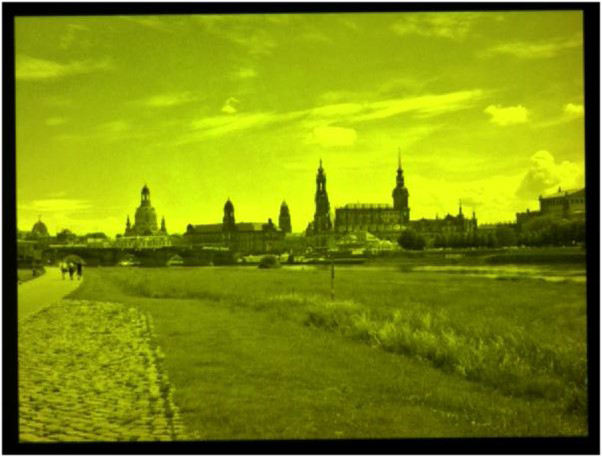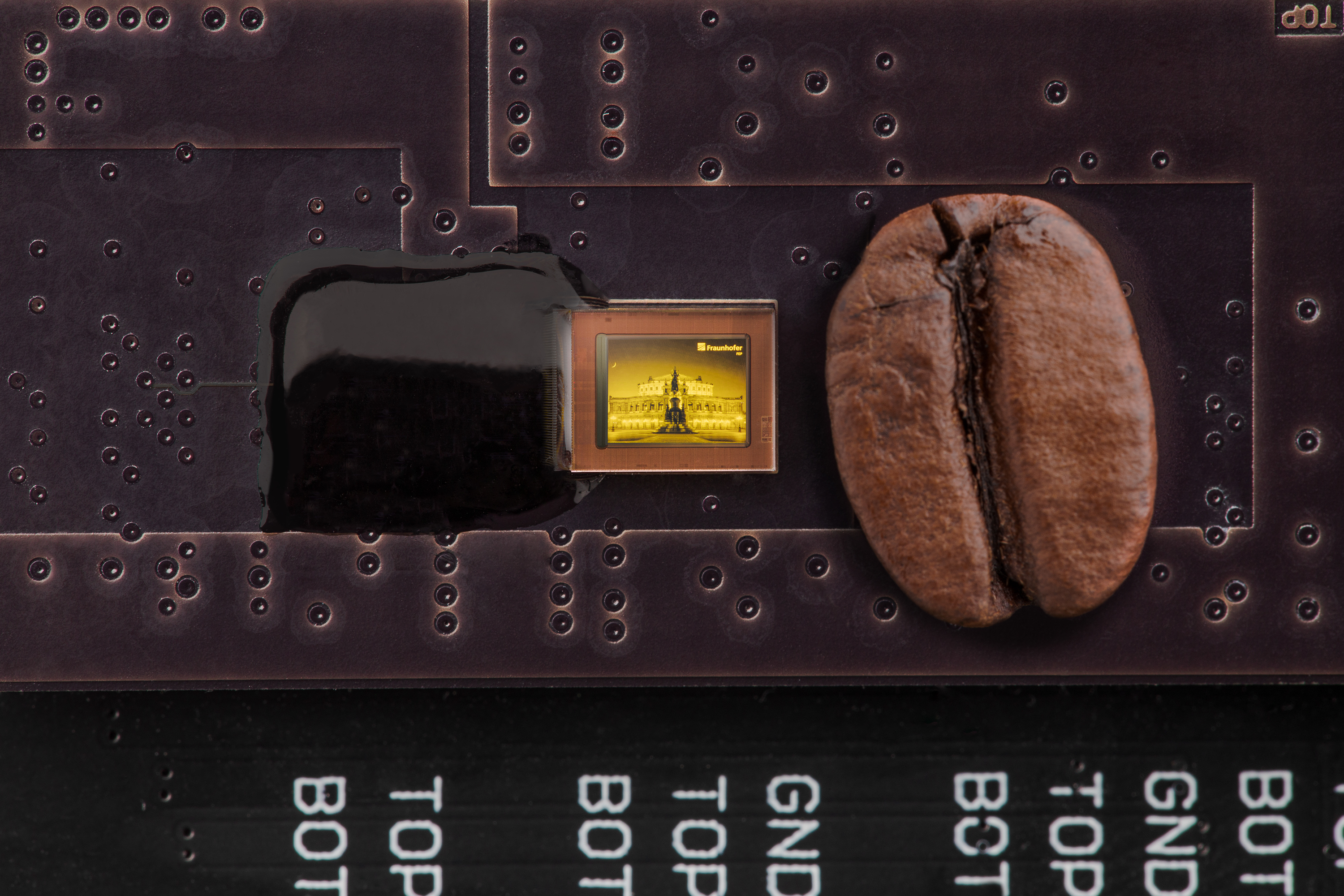High-speed light modulation for OLED, micro-LED and LCOS arrays
High-resolution light modulators determine the graphical experience in virtual reality (VR) glasses or the performance in optical communication. A new backplane architecture for light modulation has been developed at Fraunhofer FEP, thanks to which extremely high refresh rates now lead to improved image quality and optical modulation. The new backplane architecture and the high-resolution displays developed for it will be presented from 30 January to 1 February 2024 in San Francisco, USA, at Photonics West 2024, booth no. 4136 and at SPIE AR/VR/MR, booth no. 6200.
Light modulators are used in applications such as optical imaging or laser control and communication to regulate and control the intensity, phase or polarisation of light. High-speed light modulation is also used in applications such as high-resolution displays, augmented reality (AR) and VR glasses. This allows clear images with low motion blur and a high refresh rate to be generated, resulting in an enhanced visual experience.
Fraunhofer FEP has been developing microdisplays based on OLED-on-silicon technology for many years, which are designed specifically for each application. For AR and VR applications with high refresh rates, various displays with a sophisticated combination of power-saving backplane and optimized pixel densities have already been realized at the institute in recent years.
Philipp Wartenberg, Head of IC and System Design, explains the latest developments: "Our newly developed backplane architecture greatly expands the possibilities for light modulation and exceeds previous refresh rates many times over. This is made possible by the integration of a complete frame buffer and a high-speed interface to the pixel matrix. This architecture enables a data transfer rate of up to 576 Gbit/s to a pixel array with a resolution of 1440 × 1080 pixels and a pixel size of 2.5 µm for LCOS, OLED and micro-LED frontplanes."
In order to be able to offer application and customer-specific developments in addition to OLED-on-silicon technology to future partners and customers, the scientists at Fraunhofer FEP have designed the pixel control in such a way that it can serve various other front-plane technologies such as micro-LED or LCOS. The latter is particularly interesting for optical modulation applications.
The scientists at Fraunhofer FEP are available with the new technology for the development of new microdisplays and components for light modulation. Examples of various microdisplays and sensors will be presented at Photonics West 2024, from January 30 to February 1, 2024, at booth no. 4136 and at SPIE AR VR MR 2024 at booth no. 6200, in San Francisco, USA.
These developments were supported by public funds. Fraunhofer FEP would like to thank the Saxon State Ministry of Economic Affairs, Labor and Transport (SMWA) via the Sächsische Aufbaubank – Förderbank (SAB) for its support within the framework of the BACKPLANE project (100392259).
Fraunhofer FEP at Photonics West and SPIE. AR I VR I MR 2024 in San Francisco
SPIE. Photonics West
27.01.2024 – 01.02.2024
Moscone Center
San Francisco, CA, USA
https://spie.org/conferences-and-exhibitions/photonics-west
Booth no. 4136
SPIE. AR I VR I MR
29.01.2024 – 31.01.2024
Moscone Center
San Francisco, CA 94103, USA
https://spie.org/conferences-and-exhibitions/ar-vr-mr
Booth no. 6200
During the SPIE Photonics West and SPIE AR I MR I VR we present:
- Microdisplays with new backplane architecture for light modulation
- 720p OLED microdisplays for AR applications
- Ultra-low power OLED microdisplays
- Various wearables and data glasses with OLED microdisplays
- Organic photodiodes
Photonics West 2024 Conference
Paper 12908-10
29. Januar 2024, 15:55 – 16:15 Uhr, Raum 2018 (Level 2 West)
New small-node CMOS microdisplay backplane for high-speed programmable light modulation designed for OLED, microOLED, and LCOS front plane technologies
Philipp Wartenberg et al.
SPIE. AR I VR I MR 2024 Conferences
Paper 12913-30
29. Januar 2024, 13:30 – 13:50 Uhr, Raum 3008 (Level 3 West)
10.000 dpi 0.18-inch low-power OLED microdisplay utilizing a new flexible architecture in 28 nm CMOS technology
Philipp Wartenberg et al.
Session 3: Display Engine Architecture
31. Januar 2024, 09:10 Uhr, Main Stage (Level 3 West)
Semi-transparent CMOS backplane for advanced near-to-eye microdisplays
Dr. Uwe Vogel
 Fraunhofer Institute for Electron Beam
Fraunhofer Institute for Electron Beam
